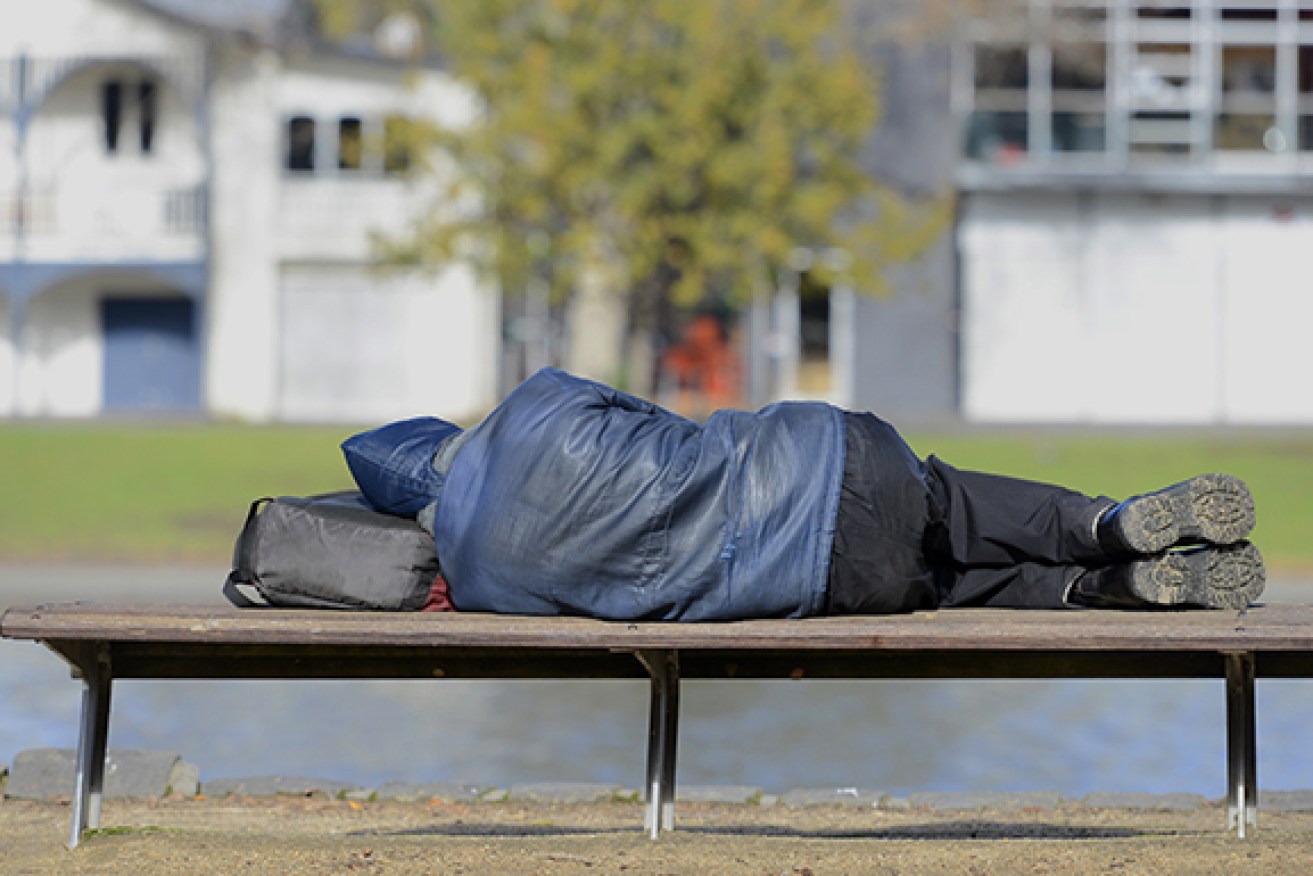Report reveals our most disadvantaged suburbs

AAP
Australia is doing little to help people in its poorest areas and disadvantage is becoming entrenched in select suburbs, new figures show.
A report released today by Catholic advocacy groups Jesuit Social Services and Catholic Social Services Australia has listed the country’s most disadvantaged suburbs and towns.
The report, based on data gathered by the service every seven years, revealed little has been achieved over the past 16 years to alleviate difficulties in the most problem-plagued areas of Australia.
Many of the same suburbs continue to feature in its list of the worst-affected postcodes, suggesting there is either nothing being done or what is being done is not working.
• See where your suburb ranks in the maps below
• Here’s how long it takes to save for a home deposit in your state
• Australia’s top 10 super funds revealed
• Shorten spent taxpayers’ money
The rates of prison incarcerations and criminal convictions show the worst-off areas of Australia are producing a large proportion of inmates.
For example, in NSW about one-quarter of prisoners come from about 3 per cent of postcodes.
In South Australia, one-quarter of prison inmates come from 5.5 per cent of regions.
In Victoria, 2 per cent of postcodes make up one-quarter of the prison population.
Unemployment and disaffected youth have continued to hamper any progress in the areas.
Report author Professor Tony Vinson said people in those areas were not getting “a fair go” and it was urgent something be done to break the cycle.
“I’ve been looking at communities for 40 years and some of the areas that were disadvantaged then are disadvantaged heavily now,” he said.
He said politicians had a misconception that generational change could be achieved inside a political term of three years.
“I would think it would be an enormous breakthrough for this society if it could take one heavily disadvantaged area in each state and territory, work with the local people for say seven or eight years and if we turn those communities around that would be the first time,” he said.
New South Wales
- The state has a small number of places with disadvantage but those areas are extremely disadvantaged, suggesting the issue is highly concentrated.
- Those areas have high rates of people with criminal convictions, and people are more likely to experience domestic violence.
- The most disadvantaged suburbs are Brewarrina, Claymore, Lightning Ridge, Walgett, Wilcannia and Windale.
Australian Capital Territory
- One quarter of the most extreme disadvantage is confined to two postcodes, unchanged from 2007.
- The top contributor to disadvantage in the ACT is rental stress, followed by limited qualifications and long-term unemployment.
- The most disadvantaged suburbs are Fyshwick, Pialligo, Symonston, Charnwood, Dunlop, Florey, Flynn and Fraser.
Victoria
- Those living in the top 3 per cent of postcodes for disadvantage in the state are three times more likely to be experiencing long-term unemployment or to have been exposed to child maltreatment.
- High unemployment was the key characteristic of the most disadvantaged areas.
- The most disadvantaged suburbs are Broadmeadows, Corio, Doveton, Frankston North, Maryborough and Morwell.
 Queensland
Queensland
- Every disadvantaged area has high levels of disengaged youth, long-term unemployment and prison admissions.
- Common features in those areas also include low family income and low levels of internet access.
- The most disadvantaged communities are Aurukun, Doomadgee, Kowanyama, Mornington, Worrabinda and Yarrabah.
Western Australia
- Those living in the most disadvantaged areas of WA are eight times more likely to have spent time in prison.
- The dominant characteristic of disadvantaged areas in WA is poor access to the internet, followed by disengaged young adults.
- The most disadvantaged areas are Derby-West Kimberley, Halls Creek, Meekatharra, Menzies, Mt Magnet, Ngaanyatjarraku and Wyndham-East Kimberley.

South Australia
- Unemployment is the dominant characteristic of disadvantage.
- In remote areas internet access is an issue, while more urbanised areas experienced more housing stress.
- The most disadvantaged areas are Anangu Pitjantjatjara, Coober Pedy, Maralinga Tjarutja, Peterborough, Playford – Elizabeth and Whyalla.

Northern Territory
- Disadvantage is more dispersed across the Northern Territory and not concentrated in certain areas like other states.
- Reasons for disadvantage vary across areas, for example: a lack of internet access and low family incomes in the Tiwi Islands; unemployment in East Arnhem; criminal convictions in Katherine.
- The most disadvantaged places are Tiwi Islands, MacDonnell, Barkly, Victoria-Daly, Central Desert, Roper Gulf and Belyuen.
No map provided for Northern Territory.
Tasmania
- Those living in the most disadvantaged postcodes are more than twice as likely to have suffered domestic violence.
- The dominant characteristic among disadvantaged communities is disengaged young adults.
- The most disadvantaged communities include the Central Highlands, Southern Midlands, Brighton, George Town, Tasman, Derwent Valley and Glenorchy.

– ABC











